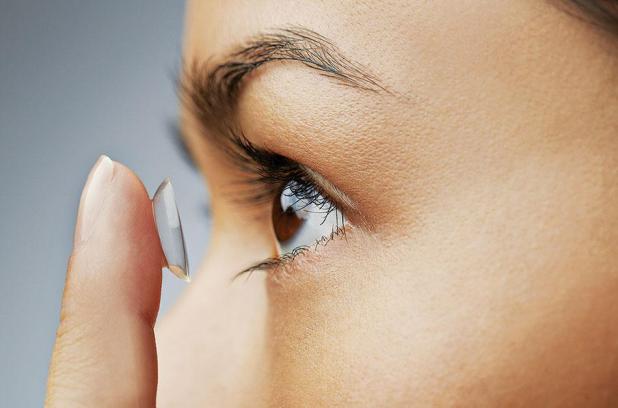
The U.S. Food and Drug Administration notes that the consequences can be significant if contact lenses are not cleaned properly, changed appropriately or handled improperly.
Contacts-related eye infections pose significant threat
The contact lens industry is booming. According to the market research experts at Grand View Research, the global contact lens market size was estimated at nearly $13 billion in 2019, and that market is expected to expand significantly by 2027.
Contact lenses are an option for people who need corrective eyewear but don’t want to wear traditional eyeglasses. Contact lenses have become so popular that it’s easy to overlook the risks they pose, and many wearers have acknowledged they routinely engage in behaviors that put them at risk of contact lens-related eye infection.
One study published in the Center for Disease Control and Prevention journal Morbidity and Mortality Weekly Report in 2014 found that 99% of contact lens wearers reported at least one behavior that puts them at risk for an eye infection related to their use of contact lenses. The CDC also notes that 20% of patients with contact lens-related corneal infections suffered eye damage as a result.
Two of the more significant threats to the eye health of contact lens wearers are microbial keratitis and corneal inflammatory events. Thankfully, adverse side effects like MK and CIEs are often preventable. Proper handwashing prior to handling contact lenses is a simple and effective way for wearers to reduce their risk for contact lens-related eye infections.
Proper handwashing involves washing hands thoroughly with a mild soap, rinsing them completely and then drying them with a lint-free towel prior to inserting or removing lenses from the eyes. As simple as that may sound, many contact lens wearers have acknowledged they routinely disregard these guidelines when handling their lenses.
In fact, a 2017 survey of 950 contact lens wearers sponsored by CooperVision found that while 88% of respondents believed bacteria on fingers could transfer to their eyes during lens insertion, 41% still did not wash their hands prior to insertion.
That’s a big mistake, as a 2015 study published in the visual science journal Eye found that the risk of MK was 13 times higher for wearers who didn’t wash their hands prior to handling their lenses compared to those who did. The College of Optometrists notes that MK is a potentially severe, sight- threatening condition, which underscores the importance of adhering to basic contact lens safety practices like handwashing prior to handling.
Many people who need corrective eyewear prefer contact lenses to traditional eyeglasses. Though contact lenses are safe, much of that safety rests in the hands of the wearers themselves.
How to safely handle contact lenses
Billions of people across the globe wear corrective lenses to improve their vision. Eyeglasses and contact lenses perform similar functions, but there’s a big difference in regard to how to maintain these popular eyewear options.
Estimates from the CDC indicate that around 45 million people in the United States wear contact lenses. Unlike eyeglasses, which can be quickly cleaned with lens cleaner and stored in a safe place to ensure frames don’t brake when they aren’t being worn, contact lenses require significant maintenance. Such maintenance ensures that contact lenses continue to work properly and also keeps the eyes safe from infection and other potential issues.
How to handle contact lenses
The U.S. Food and Drug Administration notes that the consequences can be significant if contact lenses are not cleaned properly, changed appropriately or handled improperly. Infections that can lead to vision loss and other side effects such as pain, blurred vision and redness are all potential side effects if contact lens wearers don’t properly care for their contacts.
Wearing contact lenses is second nature for many people, and that can lead some to overlook the kind of daily maintenance necessary to keep contacts safe and reduce risk for eye infection.
The contact lens experts at Bausch + Lomb remind people to follow these rules when handling contact lenses.
—Do not touch your lenses until you have washed your hands thoroughly with a mild soap, rinsed your hands completely and dried them with a lint-free towel.
—Avoid certain soaps. Soaps that contain cold cream, lotion or oily cosmetics should be avoided before handling contact lenses, as residue from these substances can stick to the lenses, potentially causing pain, irritation or blurred vision.
—Handle lenses with your fingertips. When holding contact lenses, hold them between fingertips, not with your fingernails. Fingernails can damage contact lenses if scraped against them, potentially compromising your ability to see.
—Adhere to manufacturer’s instructions. Contact solution labels and contact manufacturer instructions should be strictly adhered to. These guidelines are often product-specific, and not all solutions are safe with all lenses. Whenever you order new lenses, particularly when changing brands, be sure to read maintenance instructions carefully and confirm with your ophthalmologist which solution you should use with your new lenses.
Tens of millions of people wear contact lenses every day. When wearing such lenses, emphasize safe handling at all times to reduce your risk of eye infection.
